Bram Stoker's Whitby
In which I walk in the author Bram Stoker's footsteps in the town where he first discovered the name "Vlad Dracul", and visit some of the monuments he included in his book.
{Whitby, England}
Bram Stoker arrived in Whitby on the Yorkshire coast in July of 1890. It was seven years before the publication of Dracula, and the novel was still just a loose sketch in his mind. His wife and daughter wouldn’t arrive until a week later, and so he took the time to explore the town, wandering the streets and climbing the long steps to the ghostly ruins of Whitby Abbey overlooking the North Sea.
Bram Stoker only spent a month in Whitby, but it was a visit that changed the culture of the town forever. He set part of Dracula in Whitby: Jonathan Harker’s fiancée Mina Murray visits her friend Lucy Westenra there…and it is in Whitby that Count Dracula himself first steps foot on English soil, in the guise of an immense dog-like animal.
Like Bram Stoker, Mina Murray arrives in Whitby in the middle of July, and she describes the scene in her fiction journal…
“This is a lovely place. The little river, the Esk, runs through a deep valley, which broadens out as it comes near the harbour. A great viaduct runs across, with high piers, through which the view seems somehow further away than it really is.” - Mina Murray’s Journal
130 years later we, too, are arriving in Whitby in July and, as Bram Stoker and Mina Murray likely did, we are arriving by steam train. The North Yorkshire Moors Railway is one of the many heritage railways in the UK - and, as the name suggests, it winds through the beautiful North York Moors National Park before arriving on the coast. It is a rainy morning, and as I watch the purple heather of the moors blowing in the wind from the train window, I catch a glimpse of the great viaduct in the distance - a sure sign that we are approaching Whitby.
The harbor at Whitby is packed with tourists, even in the rain. Fishing boats sit in the water, quietly sharing space with touring boats. A replica of Captain Cook’s Endeavour floats near the bridge - Captain Cook lived in Whitby, and used locally built ships for his voyages. The harbor is lovely, but it is noisy and crowded, and we decide to go ahead and start climbing upward, towards the cliffs and the Abbey.
“The valley is beautifully green, and it is so steep that when you are on the high land on either side you look right across it, unless you are near enough to see down. The houses of the old town - the side away from us - are all red-roofed, and seem piled up one over the other…” - Mina Murray’s Journal
The rain clouds start to break up as we climb, and as we near the top of the cliff the sun shines down on the harbor and the town. The valley is steep, and by the time we reach the top, it is impossible to see the river below. Looking across the valley you can see a line of grand-looking hotels - holdovers from Whitby’s days as a Victorian resort town - and below them the red-roofed houses of the old town that Mina writes about.
It was in this area along the quay that the Whitby public library was located during the 1890s, and during his walks Bram Stoker would occasionally stop by, looking for inspiration and conducting research. One day he came upon a specific book: a memoir of a British consul’s time in Bucharest, Hungary. The book mentioned a 15th-century prince: Vlad Tepes, who was also known as Vlad the Impaler and whose father was called Vlad Dracul. Vlad Dracul translates as Vlad the Devil, and therefore his son was known as “the son of the Devil”, or Vlad Dracula. Intrigued, Bram Stoker wrote the name down in his notes.
“Right over the town is the ruin of Whitby Abbey…It is a most noble ruin, of immense size, and full of beautiful and romantic bits; there is a legend that a white lady is seen in one of the windows.” - Mina Murray’s Journal
Wait, what? A ghost? In Yorkshire?
I’m kidding, of course, because everybody knows that Yorkshire is absolutely flooded with ghosts. Depending on who you ask York is either The Most Haunted City in Europe, or The Most Haunted City in the World, and Yorkshire is definitely England’s Most Haunted County.
I haven’t seen any ghosts myself, of course - but, oh, I have definitely heard about them.
The abbey ruins at Whitby look over the North Sea, dominating the headlands. They are both grand and somehow haunting, and it is easy to imagine why they inspired Bram Stoker. Built in the 13th century Whitby Abbey, like so many of England’s Gothic abbeys and monasteries, was a victim of Henry VIII’s dissolution of the monasteries in the 16th century. Dissolved under the Second Act of Suppression in 1539, the building fell into gradual decline starting in the early 18th century.
Approximately 80% of England’s monasteries and abbeys were dissolved under Henry VIII, and the majority of those were either purposefully dismantled or left to ruin. It is heartbreaking, of course, to see the ruins of England’s great medieval abbeys scattered across the country. They are beautiful in their own right, of course, but it is a mournful beauty, tinged with sadness. Walking through the arches, I find myself wishing I could see the Abbey at night, darkened and shadowy: what is majestic during the day must be slightly mysterious at night.
Earlier this year - to celebrate the 125th anniversary of the publication of Dracula - a gathering was hosted at the Abbey: 1,369 people dressed as vampires attempted to break the world record for gatherings of people dressed as vampires. It’s an odd and very specific record…but they did it, shattering the previous record of 1,039 vampires. Go Whitby!
“Between it (the Abbey) and the town there is another church, the parish one, round which is a big graveyard, all full of tombstones. This is to my mind the nicest spot in Whitby, for it lies right over the town, and has a full view of the harbour and all up the bay to where the headland called Kettleness stretches out into the sea…There are walks, with seats beside them, through the churchyard; and people go and sit there all day long looking at the beautiful view and enjoying the breeze. I shall come and sit here very often myself and work. Indeed, I am writing now, with my book on my knee, and listening to the talk of three old men who are sitting beside me. They seem to do nothing all day but sit up here and talk.” ” -Mina Murray’s Journal
Get used to it, Mina. If there’s anything you can count on more than ghosts in Yorkshire, it’s that old men like to sit and talk. Bram Stoker would walk through this graveyard, and write down names that he saw on tombstones. One of the graves belonged to a Mr. Swales, and it is Mr. Swales who sits next to Mina on the bench, talking the day away. He also happens to be Count Dracula’s first victim in Whitby.
The church is St. Mary’s, and its graveyard is filled with interesting old headstones, often worn away from the exposure to salty sea air. Many of the headstones are markers, without tombs, memorializing sailors and fishermen who set out from Whitby and were lost at sea.
By the time we reach the churchyard, the clouds have started to gather, again - because, England - and we make our way over to the long set of steps that will take us back down to town and, hopefully, fish and chips.
“The steps are a great feature of the place. They lead from the town up to the church, there are hundreds of them - I do not know how many - and they wind up in a delicate curve; the slope is so gentle that a horse could easily walk up and down them. I think they must originally have had something to do with the abbey…” - Mina Murray’s Journal
There are 199 of them. I know because they are referred to, now, as the 199 steps. And they are as old as the Abbey and church, dating to at least the 13th century, although it is believed that there were steps here even earlier than that. Before Whitby Abbey was built, there was a smaller monastery on the site as far back as the 7th century, and it is said that the founding abbess of the monastery, St. Hilda, had the steps built as a test of faith for those who wished to worship at her church. The wooden benches that line the stairs are actually coffin rests, built to ease the journey of pallbearers carrying the coffins of the dead up to the churchyard on the cliff. Mina Murray’s assertion that they are built on a delicate curve, gentle enough for a horse to climb doesn’t seem quite right...but she changes her tune a few chapters later.
“The time and distance seemed endless, and my knees trembled and my breath came laboured as I toiled up the endless steps to the abbey.” - Mina Murray’s Journal
That’s more like it, Mina.
I’ll be honest, I don’t love Dracula, but I have a new appreciation for it after today. And so, visiting Whitby, I discover something that surprises me: not only can reading books enrich your travel, but travel can enrich your experience of books, too. It’s no secret that my desire to visit England was at least partly rooted in a lifetime of reading, but as the train pulls away from the station in Whitby, I am even more excited about the next few months. I think about exploring Jane Austen’s Bath, and Charles Dickens’ London, visiting Shakespeare’s home in Stratford and the Bronte Parsonage at Haworth, and I give thanks, for the millionth time, that I was born a reader.


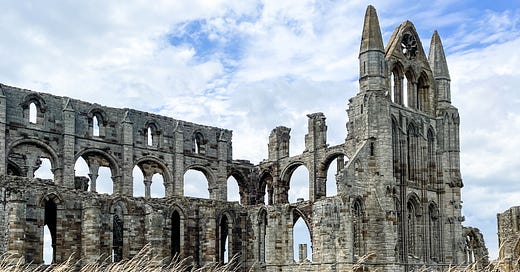


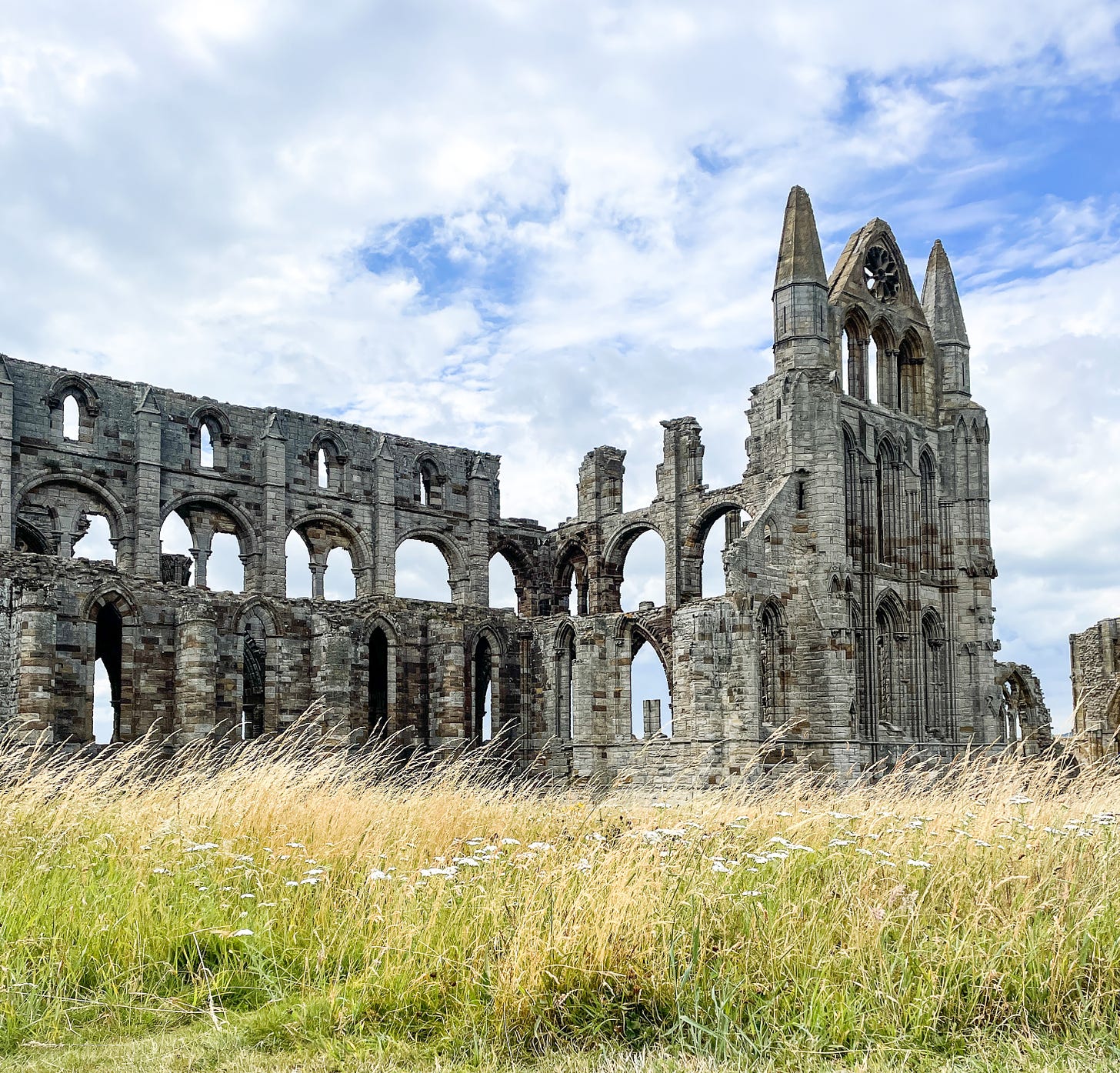

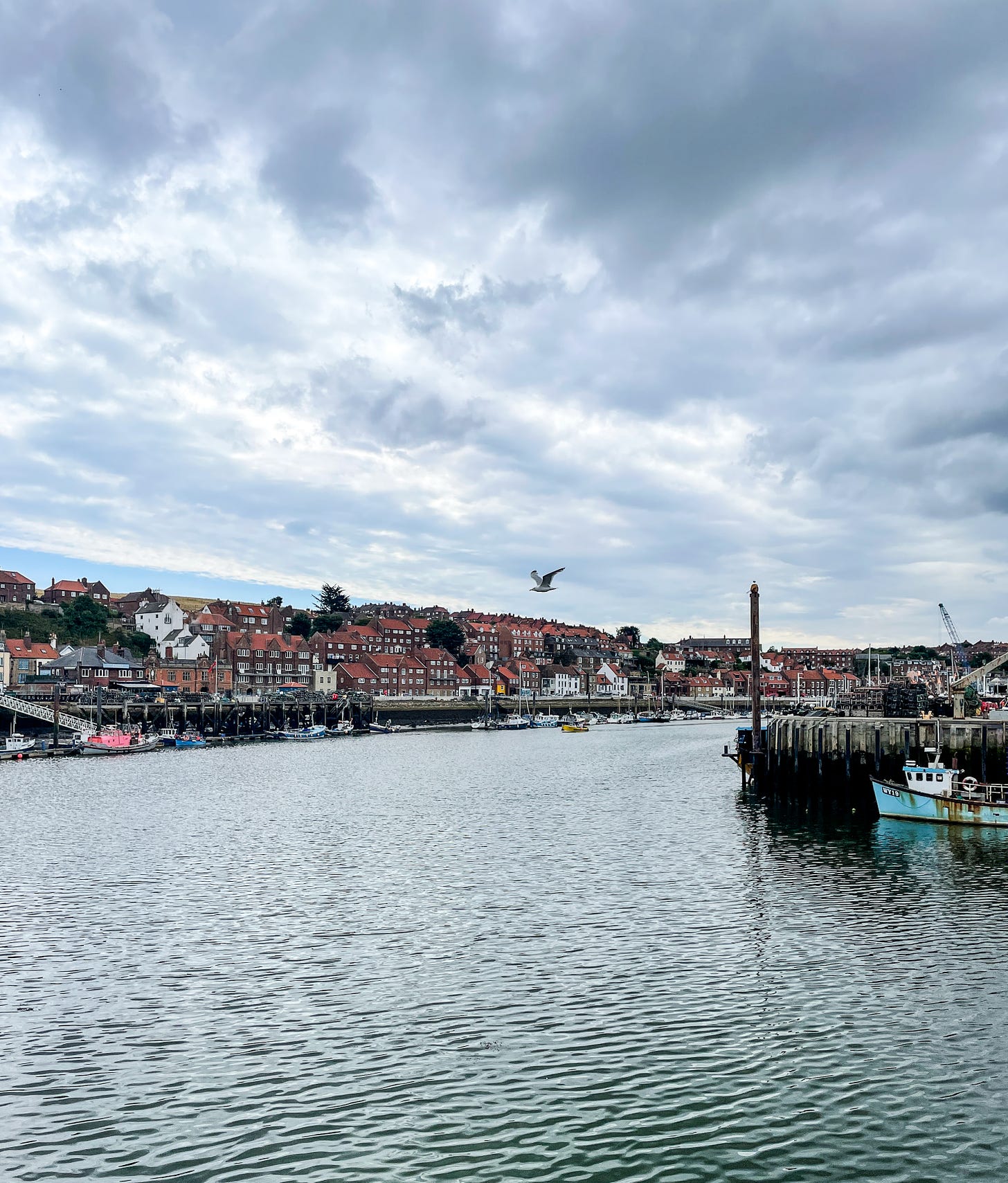

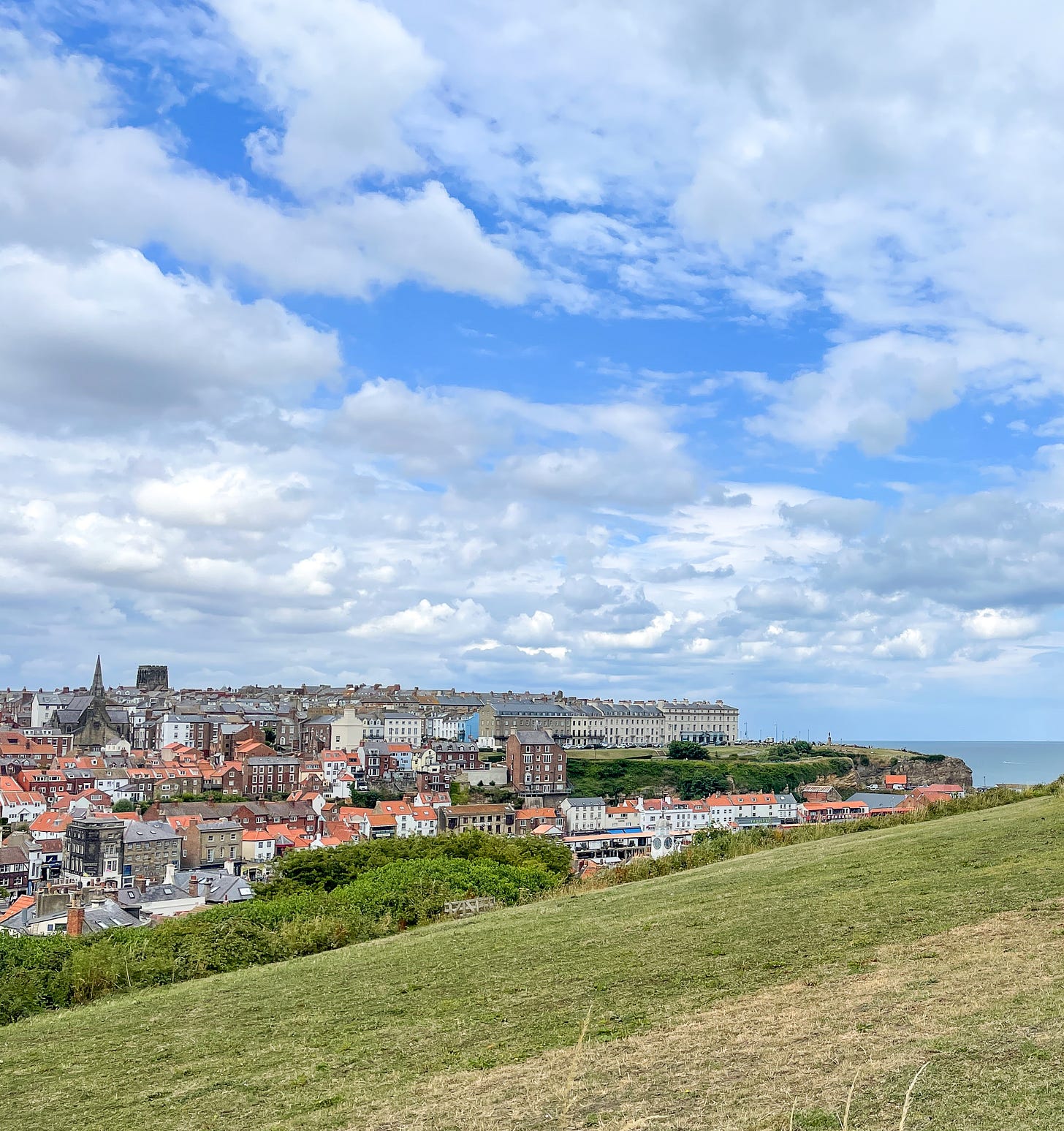

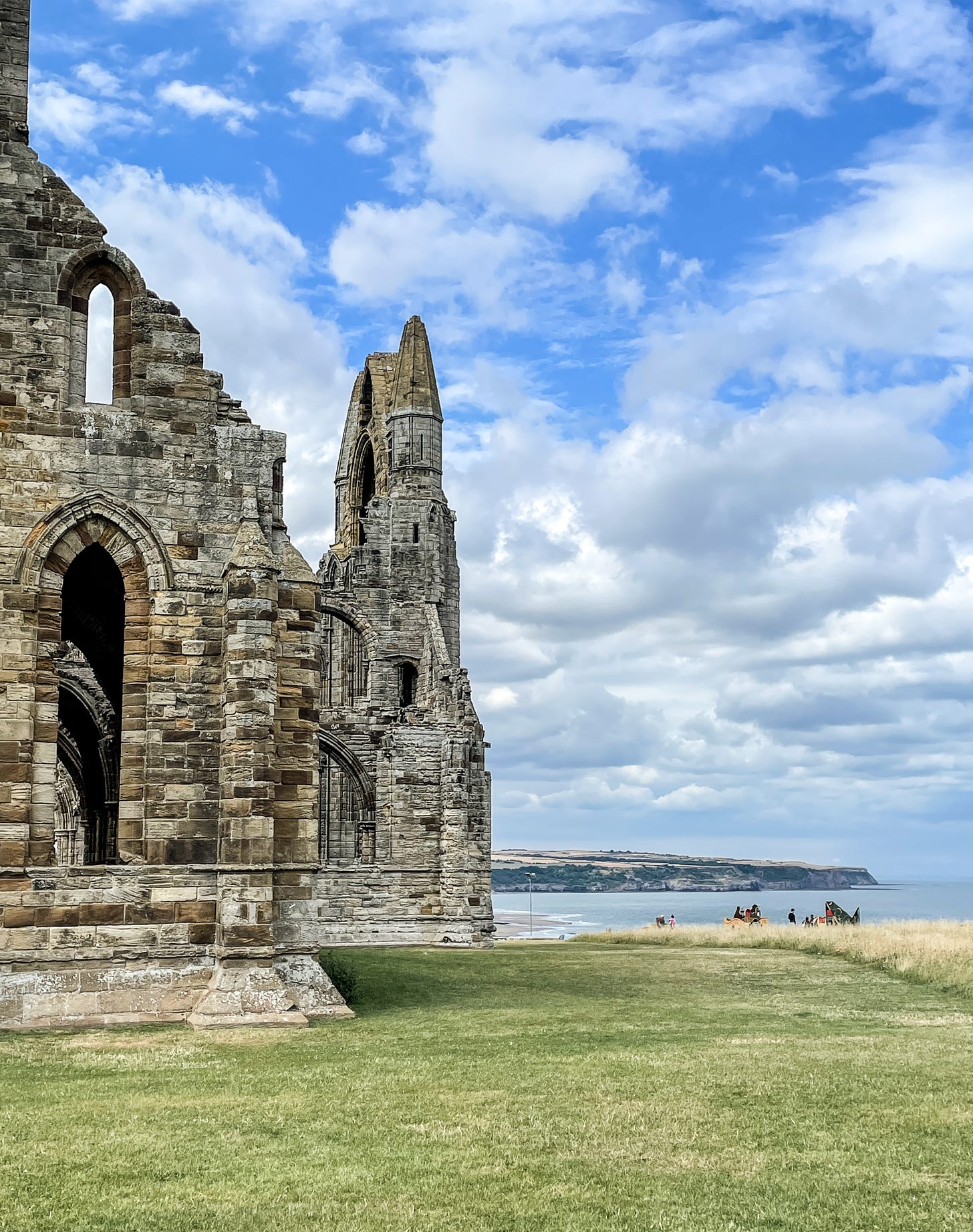


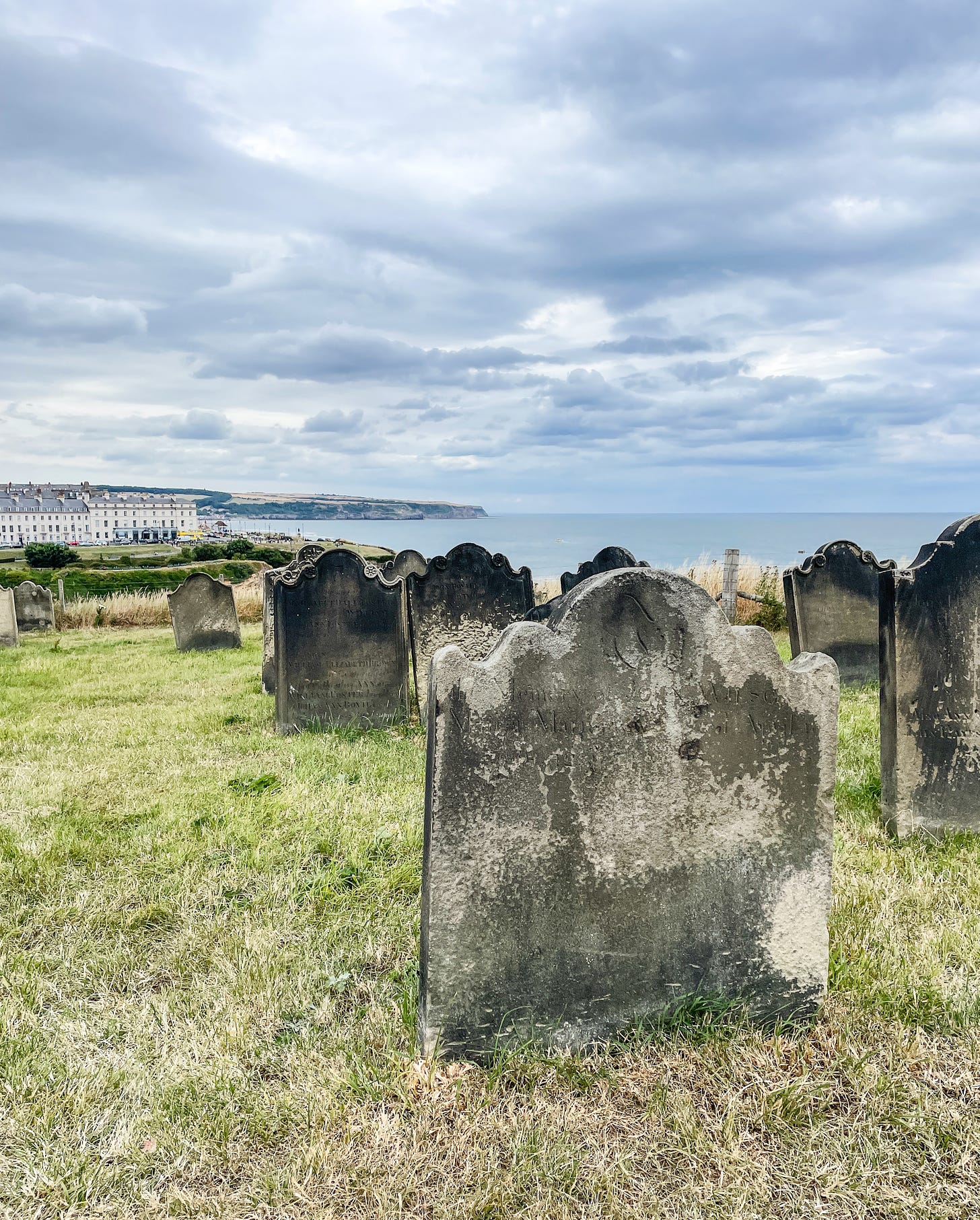
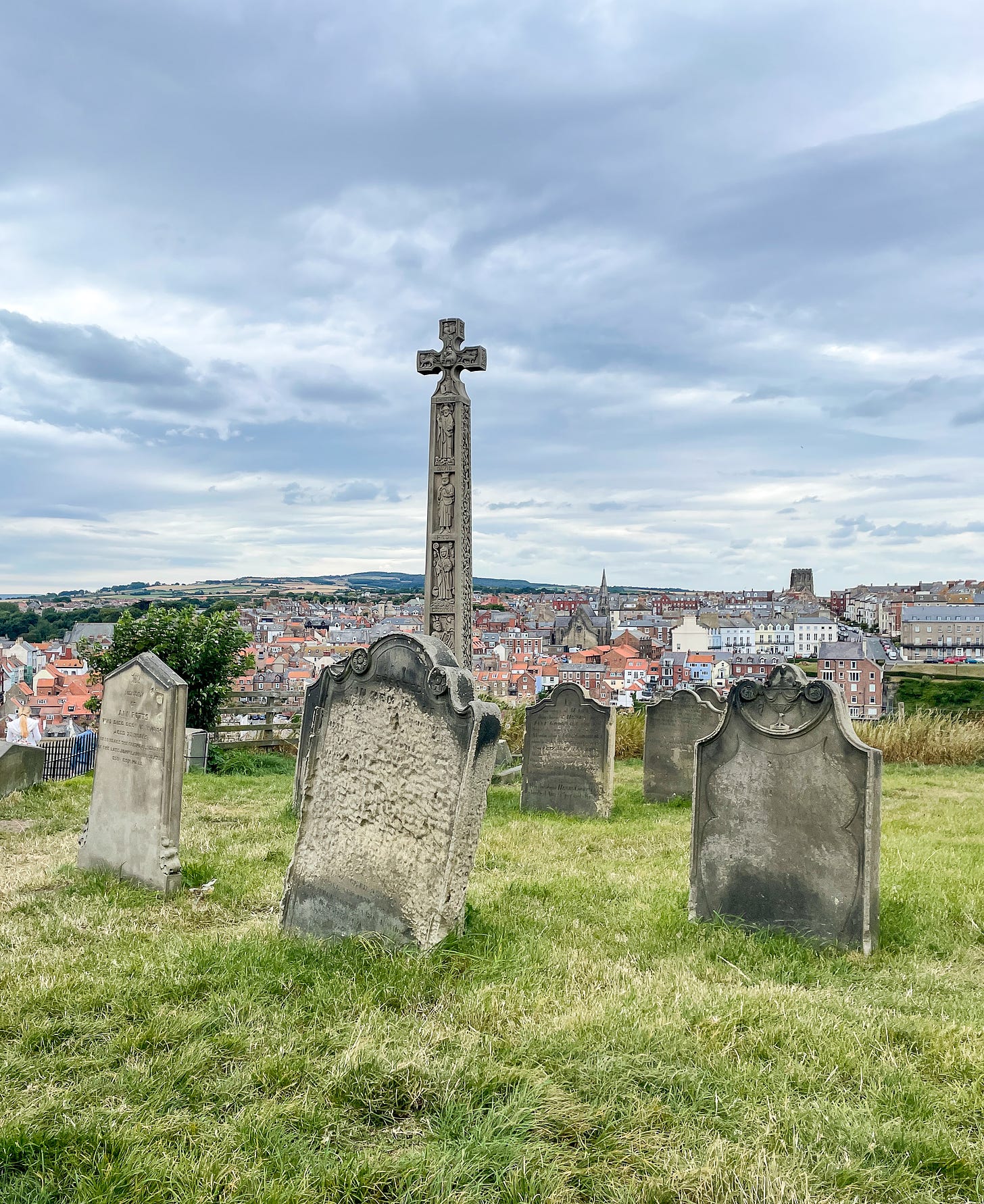
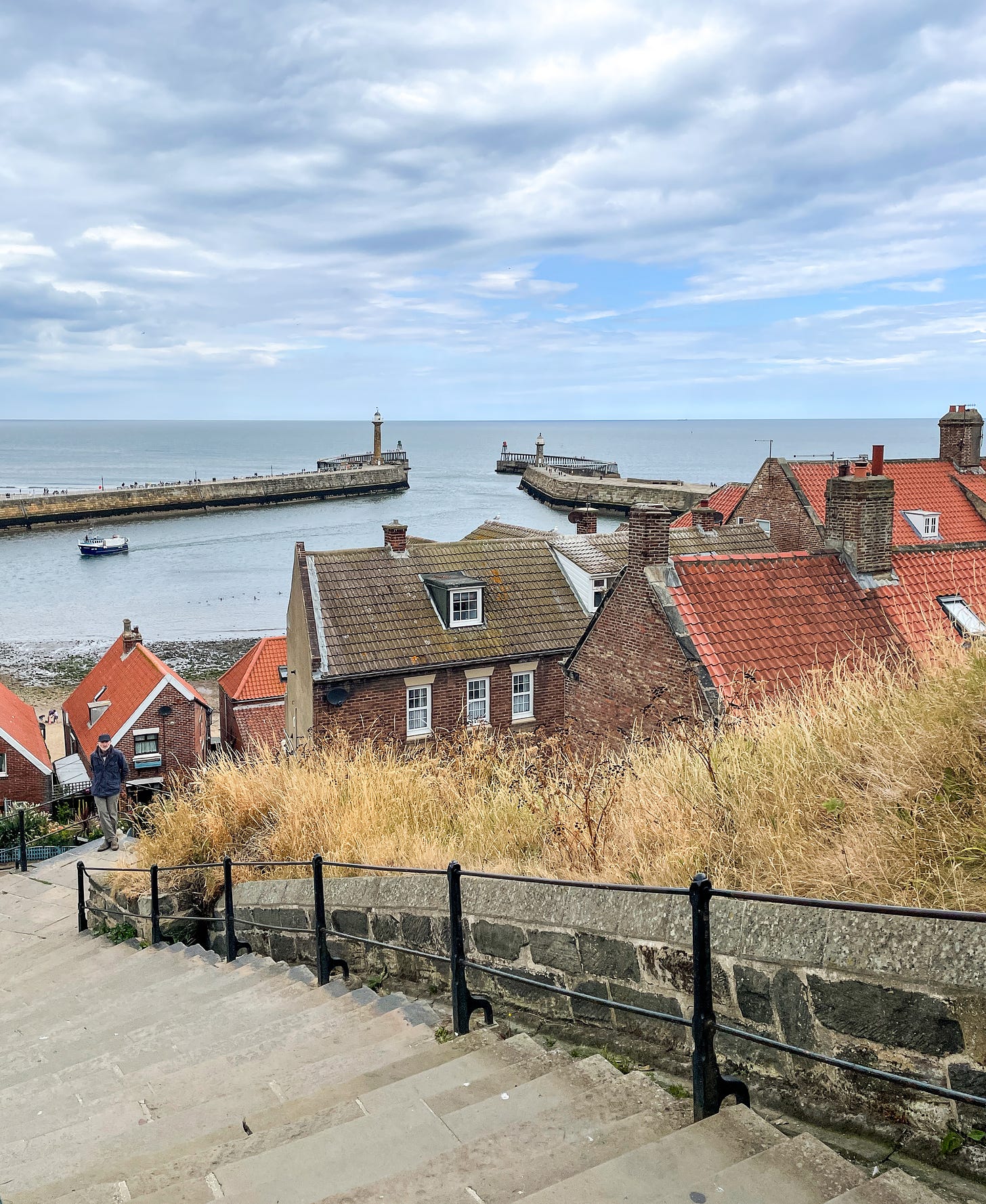
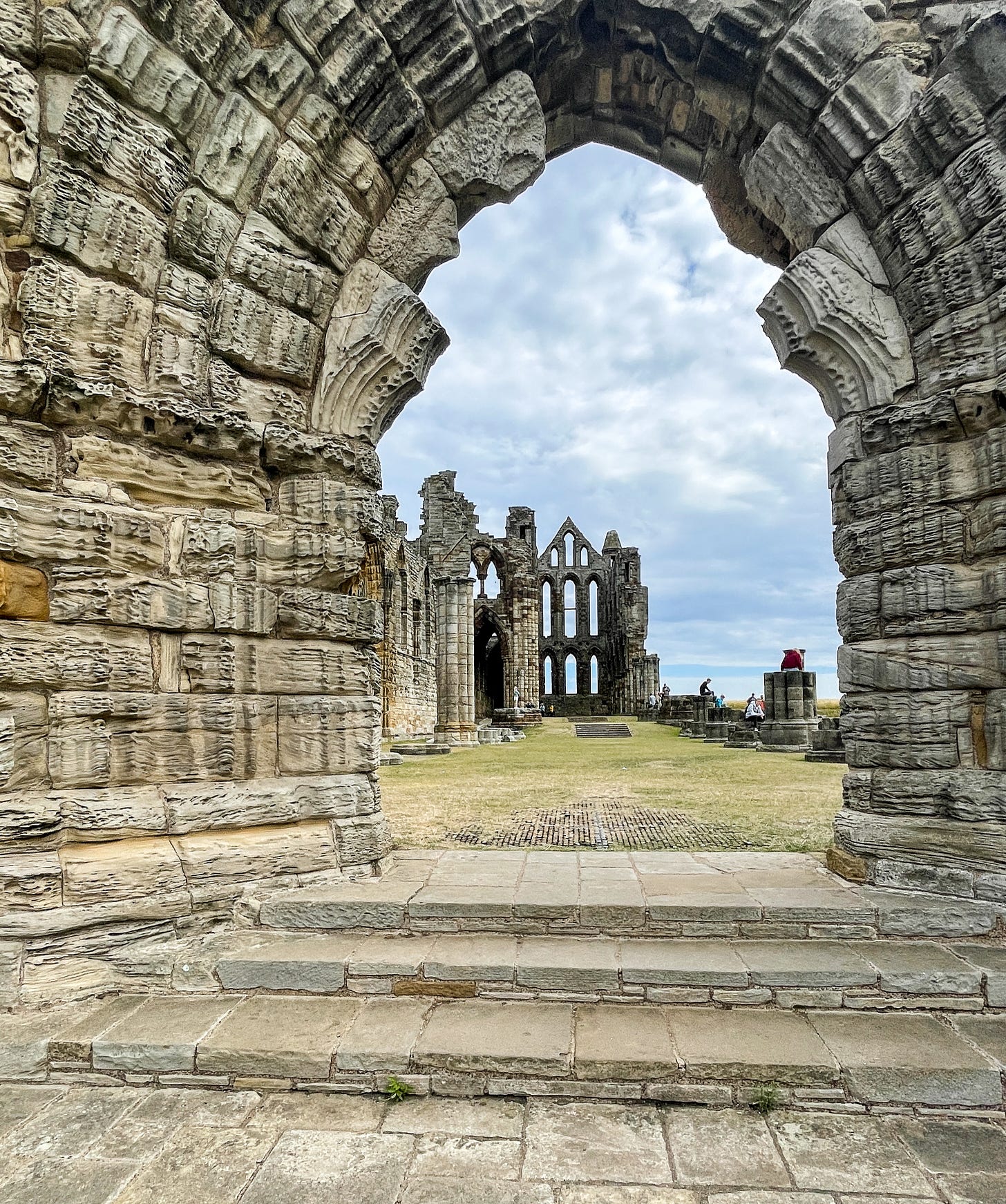
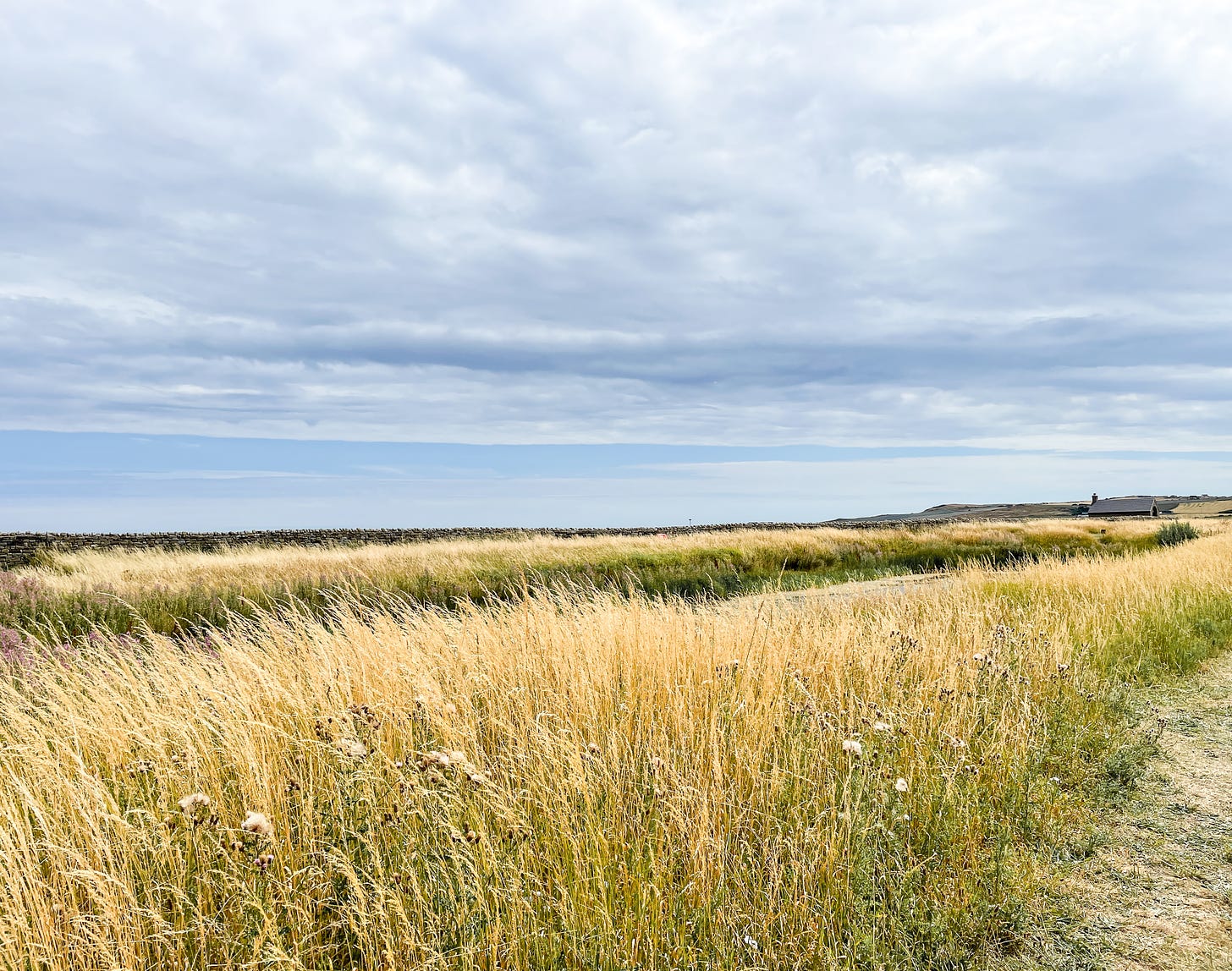

I love this post! The blend of literature, history, travel writing, and personal reflections works wonderfully. And the photos are great. I re-read Dracula this summer, actually, and these photos bring those scenes to life. I loved the book-- yes, cheesy, but also amazingly put together with all the documentary bits (news clippings and asylum records and telegrams and stuff). I have a side project with a friend of co-authoring a Victorian mystery novel so reading it was research. :)
I love that your title comes from Forster too, though I didn't recognize it without the attribution.
It's a seriously lovely an interesting place. If you love (any or all of) views, walking, seascapes, churches, history, harbours, boats and....of course...fish and chips go there!
https://peterharkness.substack.com/